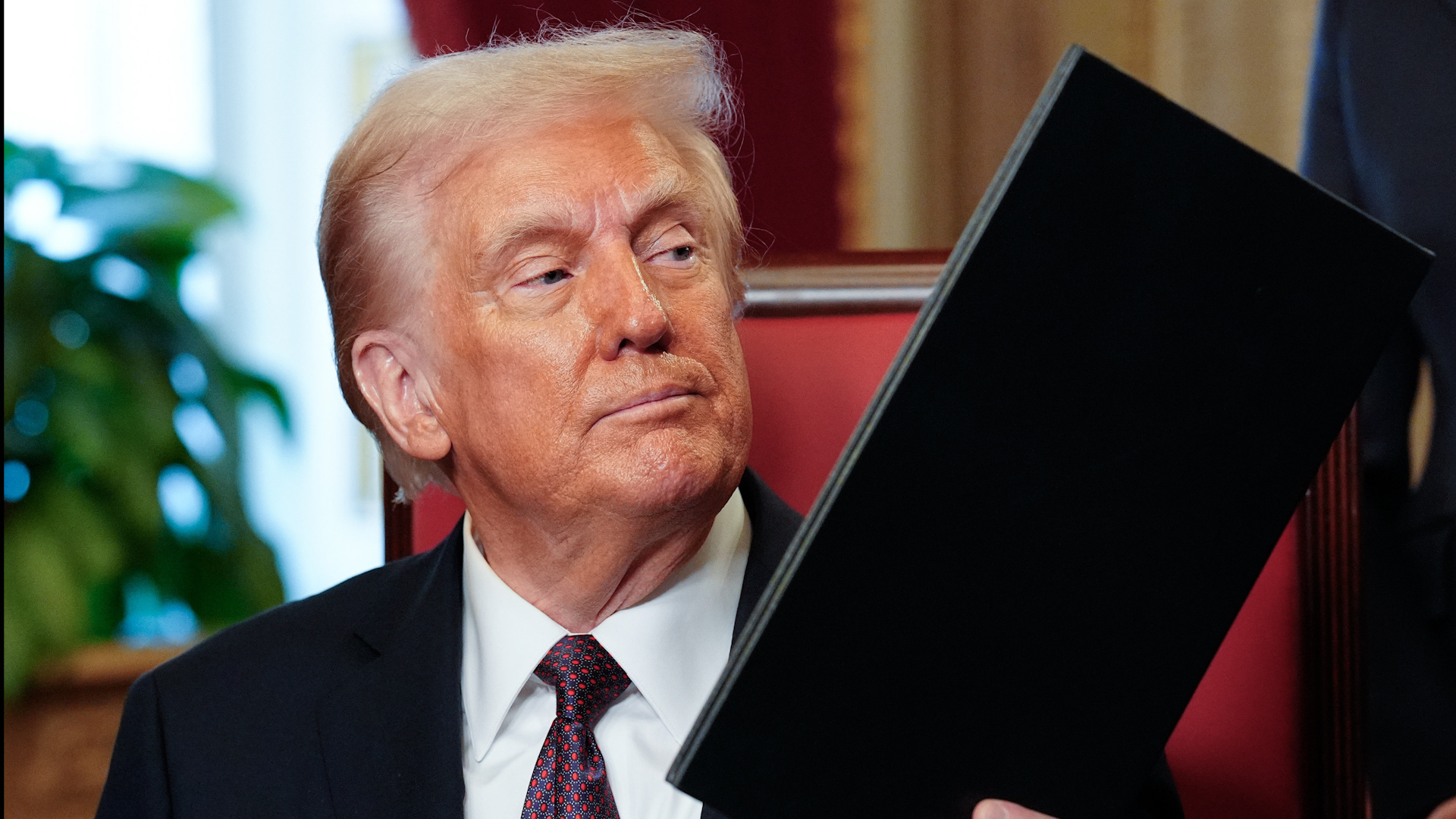
[Donald Trump]
I always say Tariffs is the most beautiful word to me in the dictionary.
Because Tariffs are going to make us rich as hell. It’s going to bring our country’s business back that left us.
[Simone Del Rosario]
As President Donald Trump says, tariff is one of his favorite words. And he’s used it a lot over the past several months. But after promising on day one to put tariffs on U.S. trading partners, day one has come and gone, so what’s happening with his tariffs? He’s got several government agencies looking into it.
Shortly after winning the election in November, Trump posted on Truth Social:
“On January 20th, as one of my many first Executive Orders, I will sign all necessary documents to charge Mexico and Canada a 25% Tariff on ALL products coming into the United States, and its ridiculous Open Borders.”
On January 20th, Trump signed dozens of executive orders, including ones to pull out of the Paris Climate Agreement and rename the Gulf of Mexico the Gulf of America. But implementing tariffs didn’t make the list, despite mentioning the levies in his inaugural address.
Donald Trump:
Instead of taxing our citizens to enrich other countries, we will tariff and tax foreign countries to enrich our citizens. or this purpose, we are establishing the external revenue service to collect all tariffs, duties and revenues. It will be massive amounts of money pouring into our treasury coming from foreign sources.
Simone Del Rosario:
As far as Mexico and Canada go, the timeline has changed.
Reporter question:
“Where are you thinking on tariffs on Mexico, given these actions you’re signing on the border?”
Donald Trump:
“Well, we’re thinking in terms of 25% on Mexico and Canada, because they’re allowing vast numbers of people – Canada is a very bad abuser also – vast numbers of people to come in and fentanyl to come in.
(Reporter: When do you think we would enact those?)
I think February 1st. I think we’ll do it February 1st.
(Reporter; 25% on both, sir?)
On each.”
Simone Del Rosario:
In a memo titled “America First Trade Policy,” Trump calls for the U.S. Trade Representative to look at the impacts of the US-Mexico-Canada trade agreement, known as the USMCA, which Trump signed his first term to replace NAFTA. The result may ultimately help the president decide whether to stay in the pact. Trump also directed multiple agencies to look at the flows of fentanyl and migration.
When it comes to China, the president said before taking office that tariffs could reach 60%. Now the president is ordering his trade rep to look at whether China is breaking an existing agreement, which could lead to more tariffs. The action is aimed at “reversing the destructive impact of globalist, America last trade policy,” according to a fact sheet seen by Bloomberg News.
Additionally, the president suggested China could face tariffs if Beijing stood in the way of selling off TikTok’s U.S. operations. Overall, Trump said he would be having “meetings and calls” with his Chinese counterpart President Xi Jinping.
Included in the “America First Trade Policy” is directing agencies to investigate Trump’s idea for an External Revenue Service, like the IRS but for tariffs. It’s unclear how it would be different from the existing system, where the Treasury Department sets tariff collection rules and Customs and Border Protection collects them.









